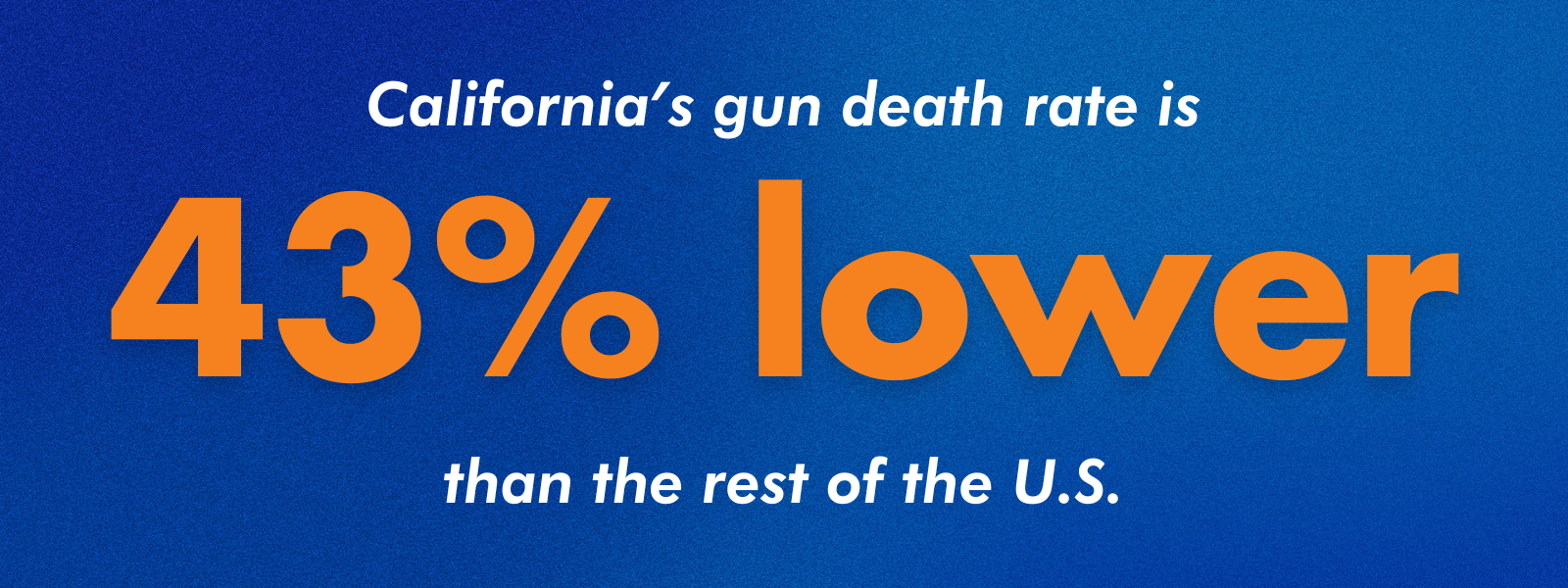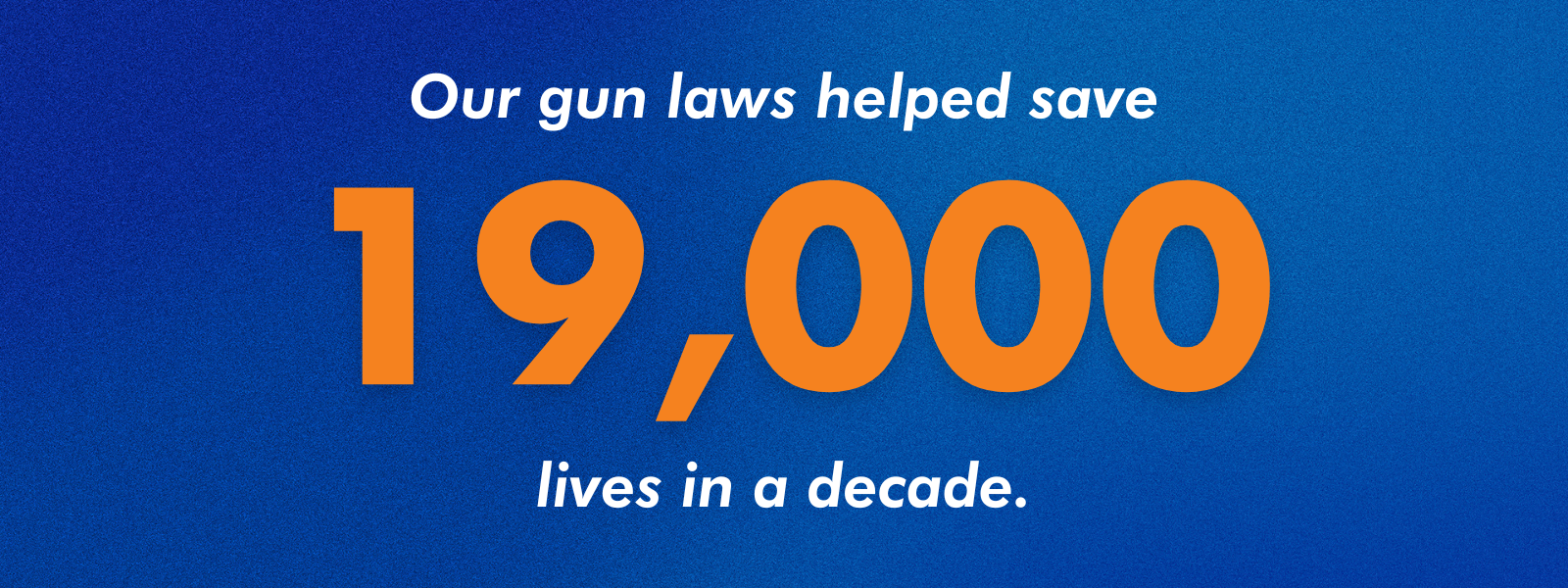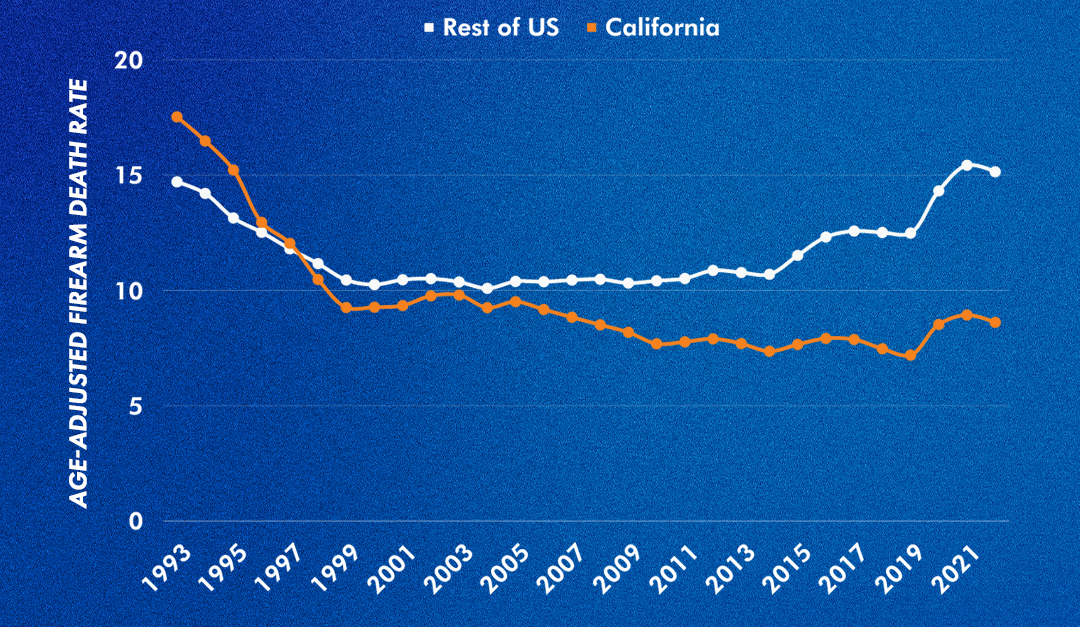SACRAMENTO – Amid an epidemic of gun violence that kills 117 Americans a day, new findings from the California Department of Justice add to the wide body of research that show California’s nation-leading gun safety laws work – saving lives and improving public safety.
With California’s gun safety laws serving as a model for the nation, Governor Gavin Newsom is proposing a Right to Safety – an amendment to the United States Constitution to ensure communities across America can determine their own gun safety laws and to enshrine fundamental, broadly supported gun safety measures into law. The Right to Safety Resolution, which calls for a constitutional convention, gets its first legislative hearing today in the Senate Public Safety Committee.
California Ranked #1 for Gun Safety

California is ranked as the #1 state for gun safety by Giffords Law Center, and the state saw a 43% lower gun death rate than the rest of the U.S. According to data from the CDC analyzed by the California Department of Justice Office of Gun Violence Prevention, California’s gun death rate was the 7th lowest in the nation and its gun homicide rate was 33% lower than the national average. Even after significant pandemic-era increases, California’s gun homicide rate for youth was nearly 50% lower in 2022 than it was in 2006.
In contrast, the rest of the U.S. experienced a 37% increase in youth gun homicide rates over the same period. The next two most populous states after California – Florida and Texas – experienced substantial increases over this same period, with youth homicide rates rising by 24% in Florida and 49% in Texas.
California’s Gun Safety Laws Have Saved Thousands of Lives

When comparing California’s gun death rate to the rest of the country, the trend since the late 1980s is unmistakable: more action on gun safety has resulted in less gun deaths.
According to the Office of Gun Violence Prevention:
“If California’s firearm mortality rate matched the rest of the U.S., California would have lost nearly 19,000 more people to fatal firearm injuries in a single decade, from 2013-2022. Tens of thousands more people would likely have been shot in this state.
“If the firearm mortality rate in the rest of the U.S. matched California’s over this same period, there would have been nearly 140,000 fewer firearm-related deaths across the nation in that decade alone, and potentially hundreds of thousands fewer gunshot injuries.”
Since Early 1990s, California Cut Its Gun Death Rate in Half

In the 1990s, California had the third highest gun homicide rate – over 50% above the national average – and its gun death rate was substantially higher than the rest of the country. As the state added more gun safety protections, more lives were saved and the trendlines reversed.
From Brady California: “From 1993 to 2017, California’s firearm mortality rate declined by 55 percent—almost four times the decrease in the rest of the nation. Many of California’s most important firearm laws went into effect in the early 1990s. As California continued to enact strong firearm laws, its firearm death rate continued to decline.”
Criminals Are Buying Their Guns Outside of California

California’s gun laws stop at our borders, meaning guns that are illegal in our state can still be used in criminal activity here if sourced in other states. California is working to advance the Right to Safety as an amendment to the United States Constitution to curb the spread of these dangerous weapons.
According to the Office of Gun Violence Prevention:
“In 2021, just over half (50.4%) of the firearms recovered by law enforcement in California and successfully traced to a final dealer of record were traced to dealers located in other states. Only six other states traced a higher percentage of firearms recovered by law enforcement to out-of-state sources. In comparison, less than 16% of guns recovered by law enforcement in neighboring Arizona were traced to dealers outside Arizona. A majority of the California-recovered firearms traced to out-of-state sources were traced to dealers in three states: Arizona (30%), Nevada (14%), and Texas (10%).”
California’s Gun Safety Laws At-A-Glance
Assault Weapons Ban: California law strictly prohibits assault weapons. This includes possessing, distributing, selling and manufacturing assault weapons. According to the Giffords Law Center, California’s assault weapons ban is one of the most comprehensive of the seven states and the District of Columbia that have bans on the books.
Red Flag Law: California became one of the first states in the nation to enact a red flag law in 2016. California law allows law enforcement, family members, employers, coworkers and school employees to seek a Gun Violence Restraining Order (GVRO) against an individual suspected of being a danger to themselves and others. If approved by a judge, the GVRO temporarily prohibits a person from possessing firearms.
Private Right of Action: California signed the nation’s first legislation allowing individuals to sue those making, selling, transporting or distributing illegal assault weapons and ghost guns – guns made at home to avoid tracing – for damages of at least $10,000 per weapon involved.
Waiting Period: California has a waiting period of 10 days for all gun purchases. The state is one of nine states and the District of Columbia that have waiting periods and California’s waiting period is among the strictest. According to Giffords, “Studies suggest that waiting period laws are associated with reduced rates of firearm suicide… One study found that waiting period laws that delay the purchase of firearms by a few days can reduce gun homicides by roughly 17%.”
Universal Background Checks: California requires background checks on all gun purchases and transfers, including private transfers and sales at gun shows. It is one of 14 states and the District of Columbia that require universal background checks.
Mental Health Reporting: California has some of the nation’s strongest laws preventing those with serious mental illness from acquiring firearms. California law requires the immediate reporting of involuntary inpatient and outpatient treatment, as well as those under guardianship. Mental health treatment facilities and psychotherapists are also required to report under certain circumstances.
Age Restrictions: In California, you must be at least 21 years of age to purchase a handgun and at least 18 years of age to purchase a long gun.
